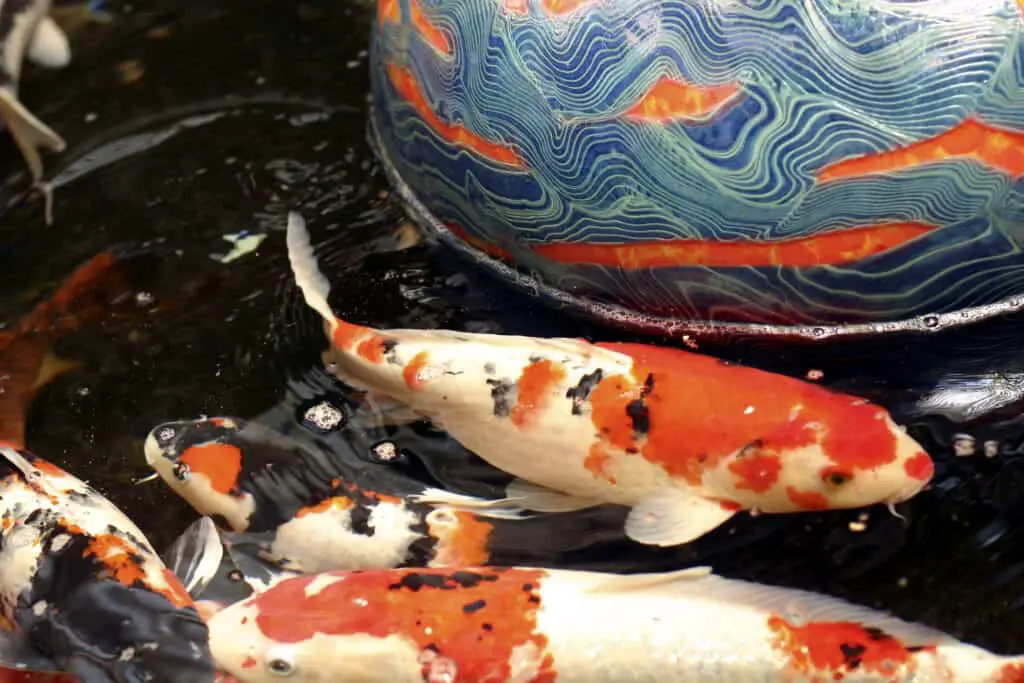
Koi fish are known for their spectacular colorations, that they can grow to be relatively large fish and learn who their owners are, happily eating out of their hands if given a chance. They are also known to be somewhat fussy regarding temperatures and temperature fluctuations. Therefore, it is vitally important to know the best temperature for koi fish growth so that you know what kind of environment you need to sustain to keep your koi fish growing optimally.
Indoor koi fish grow optimally in temperatures of 65°F – 75°F, and outdoor koi fish grow optimally in temperatures of 77°F – 80°F. Growth will typically cease in temperatures below 50°F and above 88°F, and owners should avoid subjecting koi fish to these extreme temperatures for extended periods.
Many factors are involved in providing appropriate care for your koi fish. Temperature is one of the crucial factors you need to consider when caring for your koi fish. Temperature is directly associated with how often and when you should or shouldn’t feed your fish, which relates directly to your fish’s growth rates. The following article will discuss the best temperature for koi growth.
Pro Tip: If you’re tired of wasting money and making costly mistakes on the koi-keeping hobby or are thinking about buying koi fish but don’t know where to start, I strongly suggest you check out this ebook. I recently read this ebook, and it contains SO much useful information, such as:
- 3 proven steps to identify koi fish diseases
- WARNING: 3 things you should NEVER do when it comes to caring for koi
- When to seek professional help when it comes to looking after your koi
What Is The Best Temperatures For Koi Fish Growth
Koi fish are temperature sensitive and so are their digestive systems. This sensitivity means that their digestive systems only digest food at specific temperatures. The best temperature for koi growth is between 77°F and 80°F (25°C – 27°C). At these temperatures, your koi’s digestive system will operate at its best.
When a koi fish’s digestive system is operating at optimum capacity, you can feed your koi fish 2 – 4 times a day, enough for a five-minute feed. You could also provide them smaller meals up to 7 times a day if you prefer. It would be best to try not to give them more food than they can consume in five minutes or more than they would want to eat as leftover food ferments on top of the water, resulting in tainted water that would need to be filtered more often.
This temperature range is the best for koi growth because koi fish can eat the required amount of food to promote healthy growth, but it is also the best range for koi fish’s activity rates, making them want to feed more often. Optimal temperatures promote optimal feeding, which in turn supports optimal koi growth.
Koi fish will also happily consume the required amount of food in temperatures that range from around 65°F – 88°F (18°C – 31°C) and will therefore grow quite well in these conditions. You can keep your indoor koi fish tanks at temperatures between 65°F – 75°F (18°C – 24°C) with relatively good koi fish growth results.
Indoor fish tanks might work best when your koi fish are under a year and require more frequent monitoring. Maintaining regulated water temperatures during this period of your koi’s life would benefit optimum growth rates, especially during the koi fish’s first few months of life when they are most vulnerable.
What Is The Temperature Range For Koi Growth?

Koi fish can survive in temperatures that range between 34°F to 90°F (1°C – 32°C), but they cannot be kept in the extreme temperatures for extended periods. When temperatures drop to ranges between 48°F and 64°F (9°C – 18°C), you need to start feeding your koi only 1 – 2 times a day.
In these temperatures, it is beneficial to provide your koi with specifically designed food, such as a wheat germ that is highly digestible. Your koi’s growth rate will drastically slow as they are not getting the necessary food quantities for rapid growth.
If temperatures drop below 48°F (9°C), a koi fish’s digestive system slows down almost to a standstill. If you feed them in these temperatures, the food will sit in the stomach and start to rot, causing severe problems to your fish which can be fatal.
When temperatures drop below 48°F (9°C), a koi fish enters a semi-hibernation state. They prefer to remain at the bottom of the pond where the water is warmest during this time. They will mostly stay in this area until the water warms up. They will not grow that much due to their lack of nutrients for promoting growth. In these cases, you should wait until temperatures are consistently higher than 50°C (10°C) to resume feeding.
If temperatures rise above 88°F (31°C), your koi’s digestive system will not be operating at its best, so you would need to decrease the amount of food that you feed your koi to 1 – 2 times a day, depending on size, if your koi are relatively small you can increase this to 4 times a day. This reduced feeding pattern will ultimately result in decreased growth rates.
How Does Water Temperature Effect Koi Fish Growth?
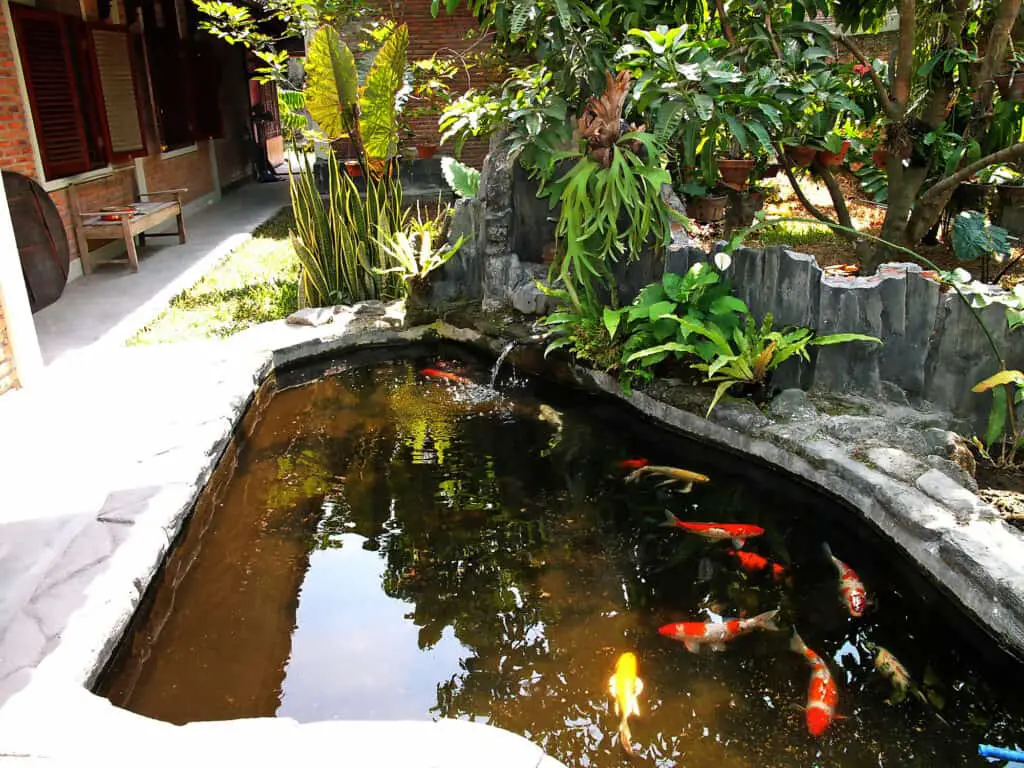
Ensuring that your koi fish gets the correct amount of nutrients through its feeding schedule is crucial to consider when raising your koi. As with most animals, growth rates are directly related to nutrient intake. Many people might not realize that a koi fish’s feeding schedule relates directly to temperature.
In optimum temperatures, you can feed your koi fish up to 2 – 4 decent meals that have them feeding for around 5 minutes or seven small meals a day. Ensure that you do not overfeed your koi, as this causes excess foods to be left on the water’s surface, promoting the growth of bacteria that can be harmful to your fish. Extra feeding can also result in higher excretion from your fish, ultimately reducing water quality.
In optimum conditions, koi fish grow around ½ to 1 inch (1.2 – 2.5 cm) per month until they are about 3 – 4 years old. They might continue to grow for several more years after this, but most of their growth will be complete. Good feeding regimens and optimum temperatures help to promote this growth.
Koi fish can grow up to around 3 feet (90 cm). They do most of this growth in the first 2 to 3 years of their lives. During this time, you could implement temperature control to ensure growth continues year-round. As discussed above, temperatures that are either too high or too low necessitate a decrease or complete halting in the feeding frequency of your fish, which will ultimately halt growth rates.
How To Maintain Optimum Growth Temperatures For Your Koi?
Whether you keep your koi in a tank or a pond, monitoring water temperature is essential. The first thing you need for your temperature monitoring arsenal is a thermometer. There are a few different types of thermometers that you could use, and which one you choose will depend on your unique situation.
You can install a water heater in your koi fish pond to maintain the optimum temperature year-round. This way, when temperatures drop in the winter months, you can regulate the temperature keeping the correct ranges necessary for continued optimal growth. Monitor these temperatures with your water thermometer.
Subjecting koi fish to regular temperature fluctuations is not suitable for them. Other than impeding their growth, there is also the risk of it being fatal to your koi fish if temperatures change too rapidly. Water regulators are beneficial for koi ponds during periods of temperature fluctuation.
Another option is to keep your still-growing koi indoors in tanks which would have the facilities necessary to maintain the temperatures needed for continued year-round growth. These facilities should include a water temperature regulator such as a heater and a thermometer to give accurate temperature readings.
Protecting your koi fish from the heat is also important to consider when keeping water temperatures at the optimum level for good growth. In these instances, you can ensure that your pond is equipped with shady areas or plant life that can offer shade. These shaded areas will provide cooler waters where your fish can hide when the water gets too hot.
Other Factors That Can Promote Healthy Koi Growth
The correct water temperature is one of the primary factors promoting optimum growth rates in koi fish. However, several other factors are also vital to promote healthy growth in your koi. These factors include water quality and pH, food quality, pond size, and genetics. Let’s examine how factors influence your koi fish’s growth patterns.
Water Quality
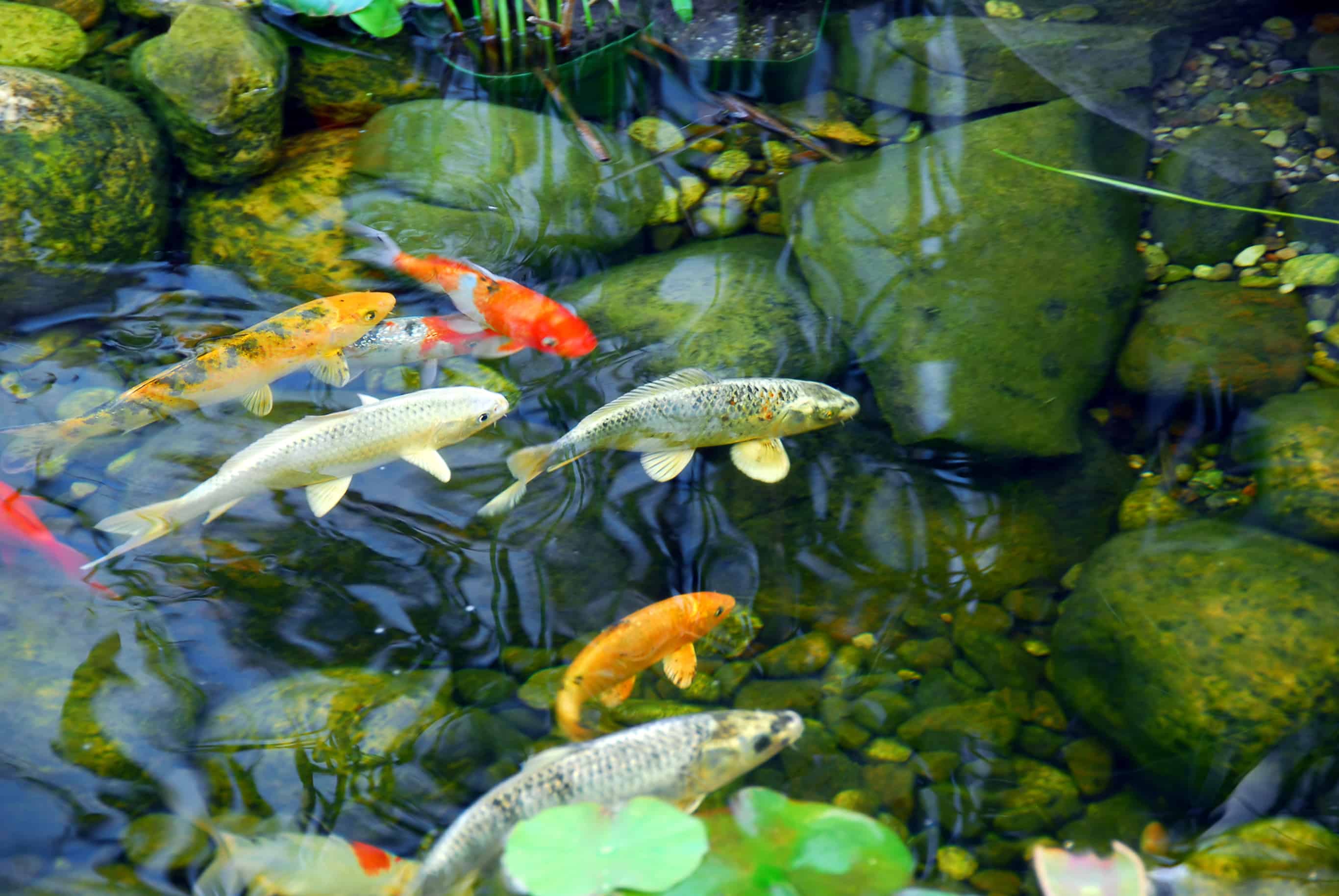
Keeping your water quality healthy is vital for your koi fish’s health and stress levels. You should monitor the water quality of your koi pond consistently to ensure that the pH, dissolved oxygen levels, and salinity are at their required levels. Unsavory water quality in a koi fish’s pond can result in stunted growth.
Ensuring that your koi ponds filter is working at its best is also vitally important. The filtration system removes organic matter from your pond that could otherwise clog up the water and become breeding grounds for algae and unwanted bacteria.
An essential part of your koi ponds filter is the biological filter. This filter breaks down ammonia into nitrates. Ammonia is toxic to koi fish in large quantities, whereas nitrates are mostly harmless. High ammonia levels in your water will also stunt the growth of your koi fish and can even lead to fatalities.
Food Quality
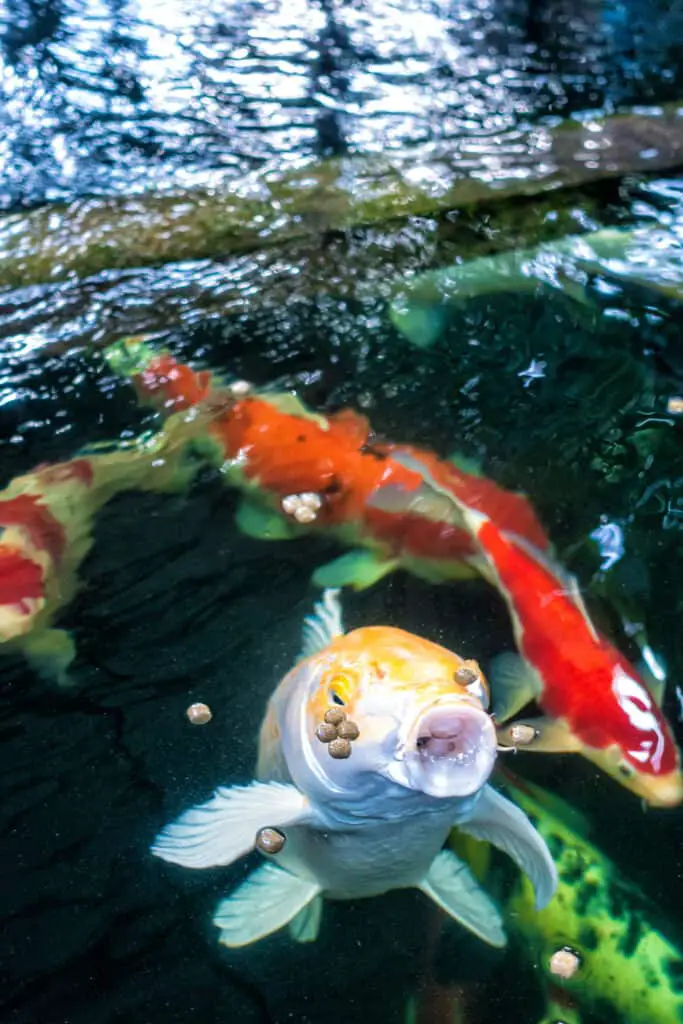
As mentioned before, diet is essential in promoting optimum growth rates amongst your koi fish. Koi fish are omnivorous, which means that they consume both plant and animal produce. Koi can eat bugs and other insects that land in their ponds, but you need to supplement this by supplying them with excellent high-quality koi feed.
Store-bought koi fish feed comes in pellet or commercial flake form. When choosing your koi’s food, select koi feeds containing less than 30% protein in their content. You can even supplement your koi’s store-bought food with shrimp, fruit, vegetables, and tubifex worms.
Pond Size
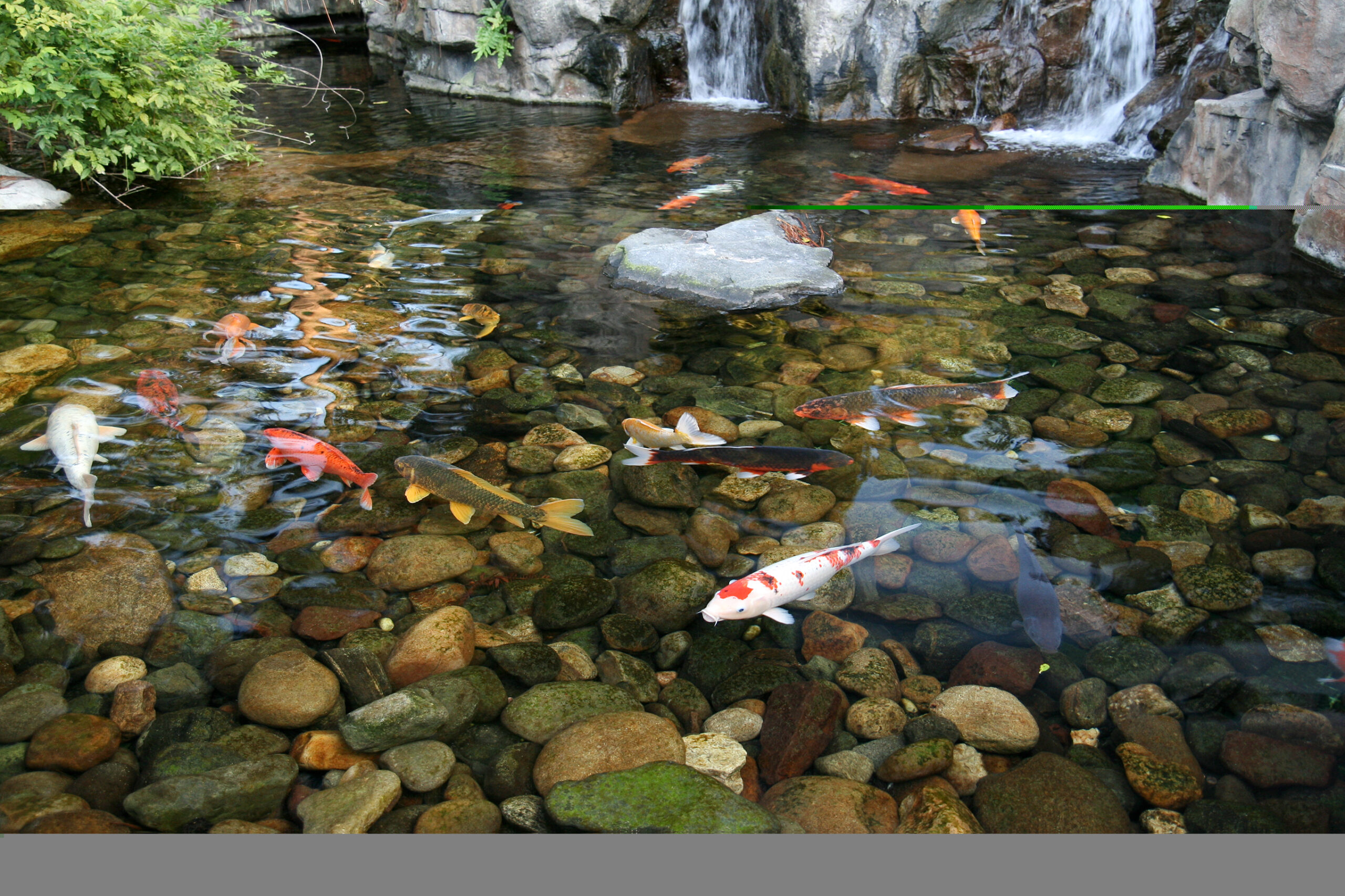
The larger your pond and the more space available for each koi fish will promote growth. Large open areas promote natural foraging and exercise, accelerating your koi fish’s growth rate.
When planning out your pond size, you should factor in that koi fish will require at least 250 gallons of water each, and this is especially important when your fish are under the age of three. Koi fish under three are undergoing their most rapid growth rates and require enough space for this growth. If they do not have the necessary space or there is too much competition in the pond, your koi might suffer from stunted growth rates.
Genetics
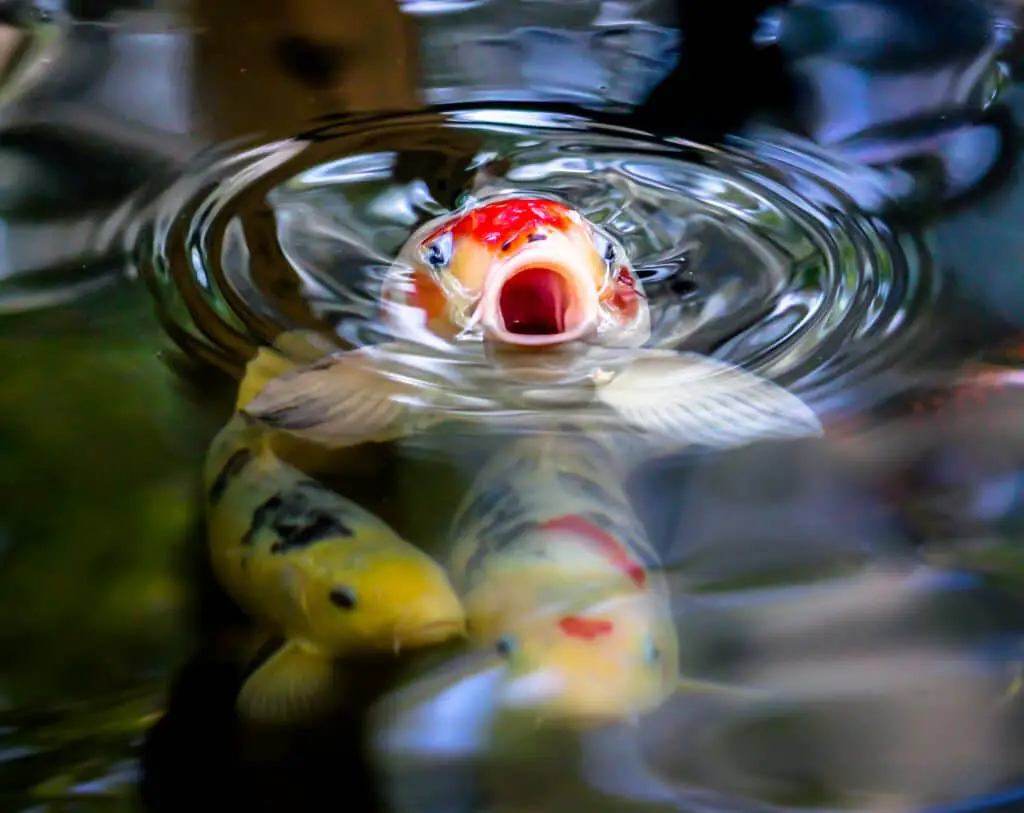
Genetics can play a massive role in the outcome regarding how large and fast your koi fish will grow. Even if you provide your koi with the perfect environment to grow into large specimens, some koi species might take longer to grow and remain the smaller size. Due to their genetic makeup, other koi species will have optimum growth and grow into larger fish.
Your average koi fish will grow to sizes of around 20 inches (50.8cm). Koi that belong to large-specimen lineages can often grow to lengths that exceed 30 inches (76.2 cm). Regarding coloration, records show that single-color varieties grow larger than multi-color varieties.
Conclusion
Koi fish are temperature sensitive, requiring specific temperature ranges for optimal growth rates. Temperatures that are between 77°F and 80°F (25°C – 27°C) are the best for koi growth. Koi fish will survive in temperatures that are between 34°F to 90°F (1°C – 32°C), but the lower ranges, which are temperatures below 48°F (9°C), are not conducive to koi fish growth.
Temperatures that range between 65°F – 88°F (18°C – 31°C) are suitable for koi growth rates as these temperatures allow for your koi fish’s digestive system to work correctly, thus allowing them to consume enough food to promote reasonable growth rates. Temperatures that exceed 88°F (31°C) are also not conducive to optimal koi growth rates.
References
https://animals.mom.com/should-koi-pond-winter-10775.html
https://www.petsmart.com/learning-center/fish-care/koi-care-guide/A0017.html
https://www.hartz.com/habitat-needs-maintenance-outdoor-koi-pondfish/
https://www.quora.com/What-temperature-of-water-should-Koi-fish-be-kept-in
https://www.sciencedirect.com/science/article/abs/pii/0044848684900516
https://www.cuteness.com/article/make-koi-grow-faster
https://nationalzoo.si.edu/animals/japanese-koi
https://www.softschools.com/facts/animals/koi_fish_facts/474/


